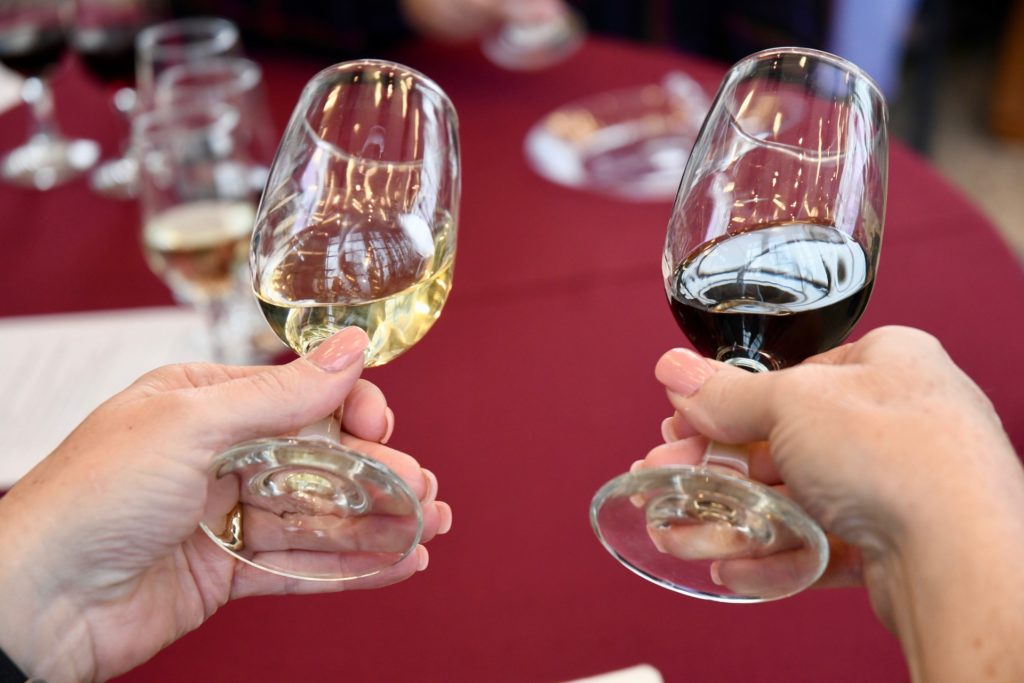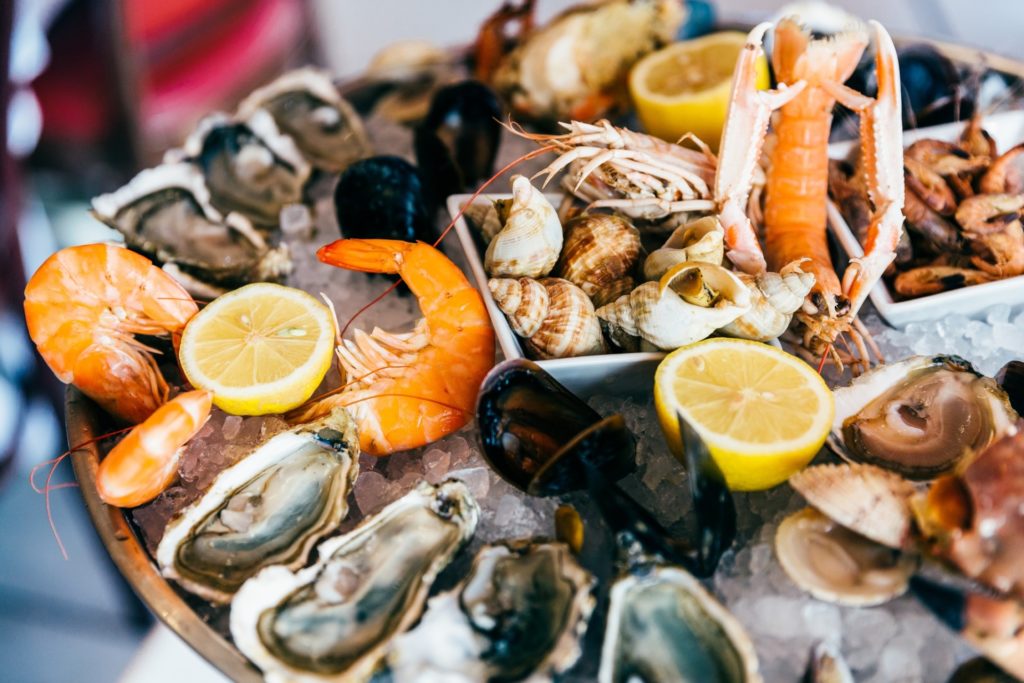Go ‘Texas big’ on Valentine’s Day
Many Texas agricultural products can create memorable romantic meals and gifts
Texas is home to many of the agricultural products that can help make a Valentine’s Day special, said Texas A&M AgriLife experts as they offered some suggestions for celebrating Texas-style.

“Texas is the nation’s largest producer of beef cattle and sheep and is also known for its seafood, wines, assorted honeys and high-quality produce,” said David Anderson, Ph.D., Texas A&M AgriLife Extension Service agricultural economist, Bryan-College Station. “Whether you go to a restaurant or to a store to buy items for that special Valentine’s Day celebration, Texas pretty much has you covered for the items to make it a special experience.”
From wine and roses to steaks and strawberries, Texas offers consumers the opportunity to not only celebrate with a loved one, but also support fellow Texans.
Make a splash with Texas seafood
Seafood is a top choice for couples wanting a special Valentine’s Day meal.
The wild fishery industry of the Texas Gulf Coast consists of shrimp, oysters, crabs and various fish species — including redfish, speckled trout, tuna, drum, sea bass, flounder, sheepshead, crappie and mackerel. Together, these provide an exceptional degree of choice for anyone wanting to put seafood at the center of a memorable Valentine’s Day meal.
“One of the best ways to support local economies is to know where your food comes from,” said Laura Picariello, fisheries specialist with Texas Sea Grant based at Texas A&M University. “You can ask your grocer or call your restaurant in advance to ask if they source locally.”
In addition to wild seafood harvests, Texas aquacultural oyster farming, made possible by the Texas Legislature only a few years ago, is seen as an emerging industry on the Texas Gulf Coast.
Texas wines add to the romance
Texas is home to over 520 wineries and more than 5,000 acres of vineyards, making it the fifth largest wine-producing state in the nation.
“Texas wines continue to grow in popularity and can be a wonderful complement to a Valentine’s meal or celebration,” said Andreea Botezatu, Ph.D., AgriLife Extension enologist in the Texas A&M Department of Horticultural Sciences. “Texas wineries produce a wide variety of quality table, fortified, dessert and sparkling wines. These can be paired with other food items or enjoyed by themselves as part of a romantic evening.”
The wine grapes with the greatest number of plantings in the state are cabernet sauvignon and tempranillo with other top plantings to include merlot, mourvèdre, blanc du bois, sangiovese, black Spanish, malbec and syrah.
Botezatu noted that in addition to purchasing Texas wines at stores or in restaurants, another way to enjoy them for Valentine’s Day and other occasions is to participate in a wine tasting or take a vineyard tours, which often includes a wine tasting, socially distanced of course.
“There’s a natural connection between wines and romance,” she said. “When you picture a romantic meal or romantic evening, you’ll often think of couples holding a glass of wine and toasting one another.”
Meat me for dinner
Whether going to a romantic restaurant with tables set far apart or cooking at home for a special someone, Texas-raised beef and lamb are ideal for a Valentine’s Day dinner.

A juicy steak has long been a “go-to” entree for special occasions, and Feb. 14 is no exception.
Popular cuts include New York strip steak, T-bone, ribeye, top sirloin and beef tenderloin. Less traditional cuts include the chuck flap, ribeye filet, tomahawk steak, Denver or Sierra cuts, flat iron steaks and tri-tips.
Another special meat choice for a romantic meal is lamb.
“Lamb is often an overlooked entrée option for Valentine’s day and a popular cut for Valentine’s Day is rack of lamb, also known as the ‘prime rib’ of the sheep,” said Reid Redden, Ph.D., AgriLife Extension sheep and goat specialist and Texas A&M AgriLife Research and Extension Center interim director, San Angelo.
Romantics looking for roses
There’s nothing like giving an iconic rose for Valentine’s Day, but this year you may want to consider branching out and giving roses that can be enjoyed for years to come.

AgriLife Extension has designated 21 types of roses as Earth-Kind, meaning they have demonstrated superior pest tolerance and outstanding landscape performance in extensive research and field trials in Texas.
If planted in a container now, your Valentine could be rewarded with Earth-Kind blooms throughout the spring, summer and fall. Many Earth-Kind roses have successive blooms over multiple seasons.
“Beauty that’s Tough to Beat” is the slogan for Earth-Kind roses and with colors from golden pearl to cherry red, and sizes from dwarf shrubs to climbing varieties, there is something suited to your sweetheart for Valentine’s Day.
Sweets for your sweetheart
And what Valentine’s Day would be complete without sweets? But one doesn’t have to look to chocolates alone when there are strawberries and honey on the market.
From Lubbock to Arlington and Poteet to Houston, Texas strawberry production is growing. A strawberry plant could serve as an edible gardening gift that keeps on giving well beyond Valentine’s Day, and strawberries, alone or dipped in chocolate, are often associated with this romantic occasion.

Larry Stein, Ph.D., AgriLife Extension horticulturist based in Uvalde, said while some strawberries grown in more northern parts of the state may not be ready for Valentine’s Day, those grown in the South-Central portion of the state most likely will be available for consumption by then.
Juliana Rangel, Ph.D., Texas A&M AgriLife Research associate professor of apiculture in the College of Agriculture and Life Sciences Department of Entomology and director of the Texas A&M Honey Bee Lab said there are a wide range of types and taste profiles of Texas honey.
“Honey can be an appropriately sweet gift to give on Valentine’s Day or a complement to a Valentine’s Day dessert or other treats,” Rangel said. She added if you want to be sure your honey gets the most out of the honey you give as a gift, “find local, ‘raw’ honey that has a distinctive or unique flavor.”
Honey also is a great addition to a charcuterie and cheese board. Texas is known for its dairy production, recently moving up to No. 4 in the U.S. Texas has everything from artisan cheese companies to the large cheese plants in the Panhandle, offering a good addition to the Texas-oriented Valentine’s Day celebration.
More garden-inspired ideas are available from Lisa Whittlesey, AgriLife Extension senior program specialist and International Junior Master Gardener coordinator, Bryan-College Station.



